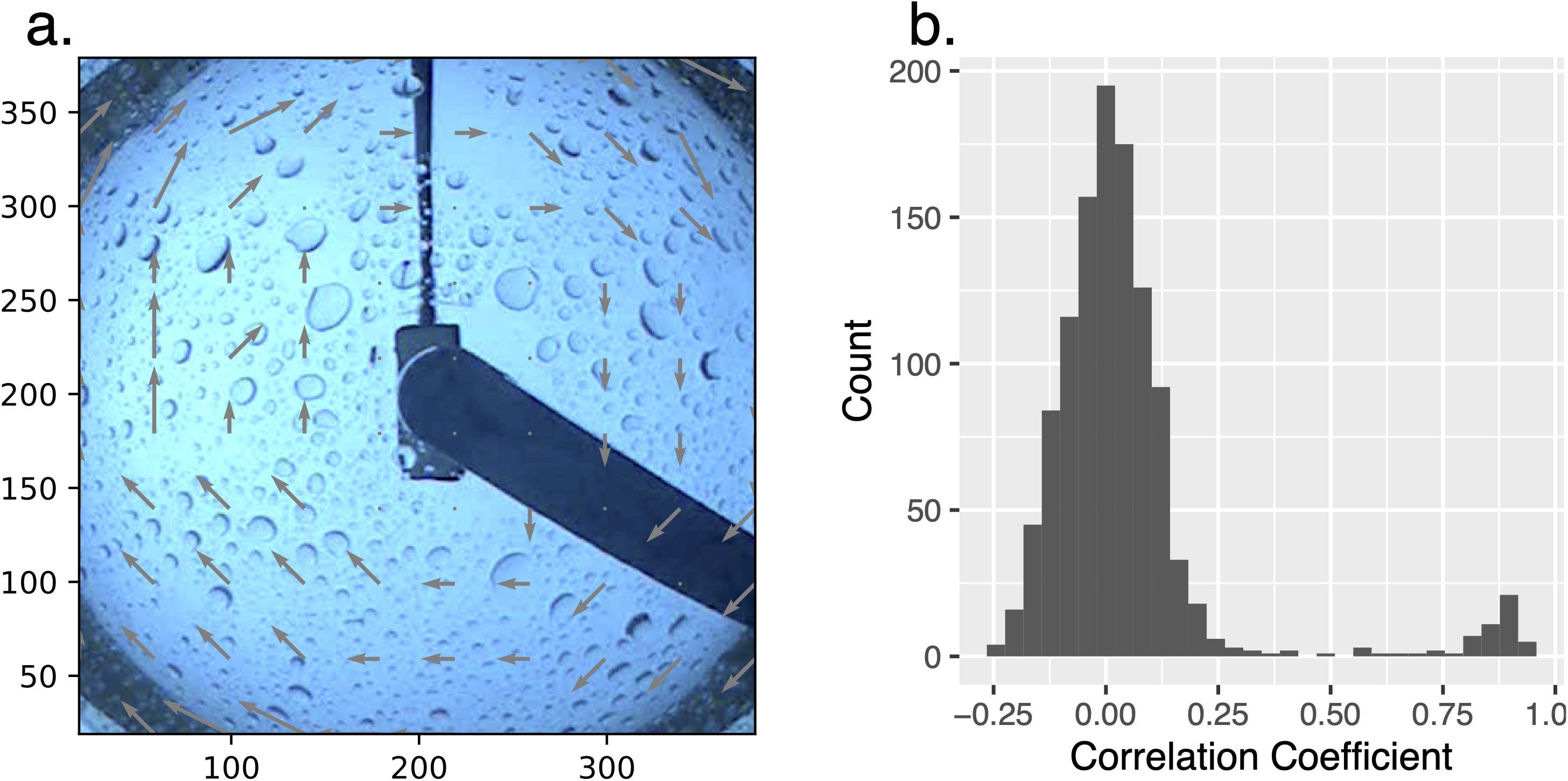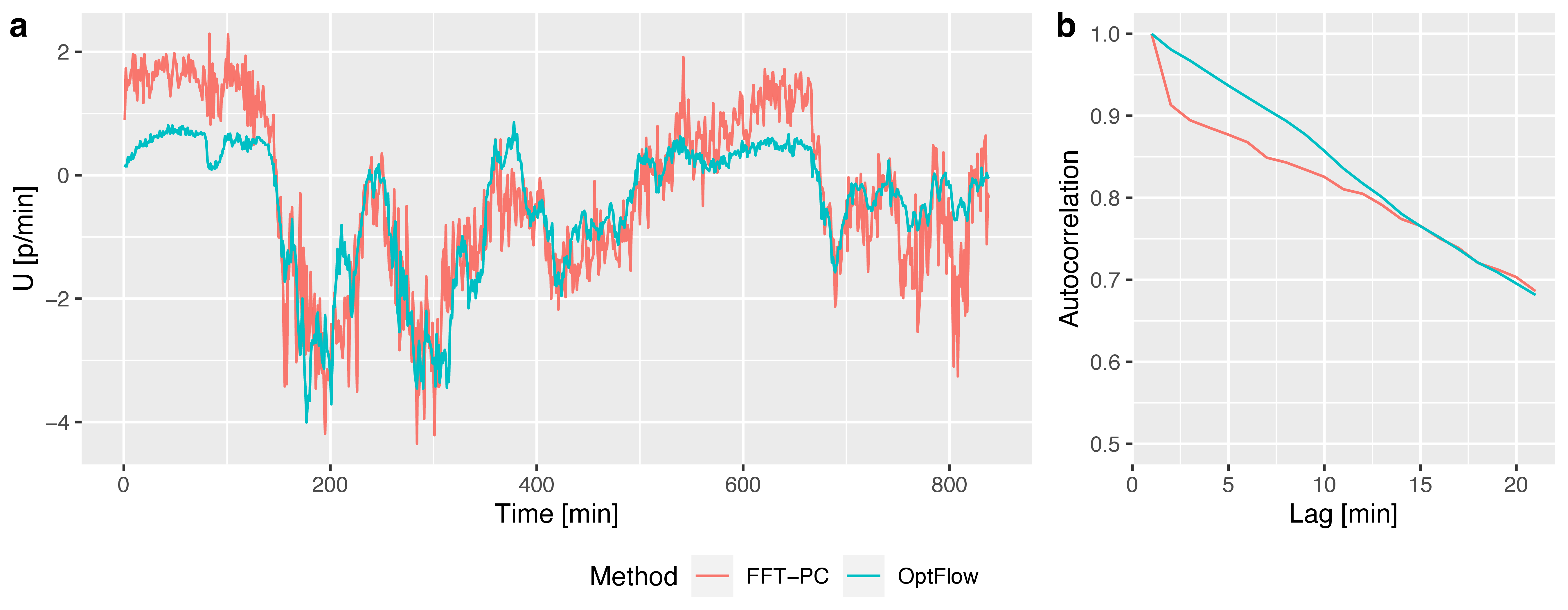Optimizing cloud motion estimation and detection of raindrop contamination in ARM cameras
Submitter
Collis, Scott Matthew
— Argonne National Laboratory
Area of Research
Cloud Distributions/Characterizations
Journal Reference
Raut B, P Muradyan, R Sankaran, R Jackson, S Park, S Shahkarami, D Dematties, Y Kim, J Swantek, N Conrad, W Gerlach, S Shemyakin, P Beckman, N Ferrier, and S Collis. 2023. "Optimizing cloud motion estimation on the edge with phase correlation and optical flow." Atmospheric Measurement Techniques, 16(5), 10.5194/amt-16-1195-2023.
Science

Figure 1. Detection of raindrop contamination in TSI images, by detecting the rotation of the dome mirror in the motion field to identify affected frames with better accuracy. From journal.

Figure 2. Comparison of cloud motion estimates over Lamont, Oklahoma using PC and OF methods on 26 July 2016. Panel a) shows the time series of the domain average U component at 1-min intervals, and panel b) shows the stability of the vectors using the lag autocorrelation function. From journal.
This study investigated the factors affecting cloud motion estimations from camera images using different settings of the phase correlation (PC) and optical flow (OF) methods, concluding that shorter frame intervals provides the most accurate results while image resolution has small effect. The OF algorithm is more stable than PC for the fast-moving targets.
Impact
Improved cloud motion estimation and image sampling has the potential to significantly enhance the local prediction of solar irradiance. In addition, a sky-viewing camera is being tested to identify and track clouds for real-time optimization of mini micropulse lidar (MiniMPL) scan strategies to increase the density of scans for targeted clouds.
Summary
This study used the phase correlation and optical flow methods to estimate cloud motion vectors (CMV) from sky camera images. The study investigated the stability of the method by altering block size, frame interval, and RGB channels, using data from the United States Atmospheric Radiation Measurement user facility's Southern Great Plains observatory. The investigators found that shorter frame intervals and larger block sizes lead to stable CMV estimates and that the choice of RGB channels and resolution has a limited effect. The study's results are critical for optimizing algorithms for edge-computing sensor systems and have the potential to improve cloud identification and local solar irradiance prediction. They also detected raindrop-contaminated images using the rotation of the total sky imager (TSI) mirror in the motion field.
Keep up with the Atmospheric Observer
Updates on ARM news, events, and opportunities delivered to your inbox
ARM User Profile
ARM welcomes users from all institutions and nations. A free ARM user account is needed to access ARM data.


















